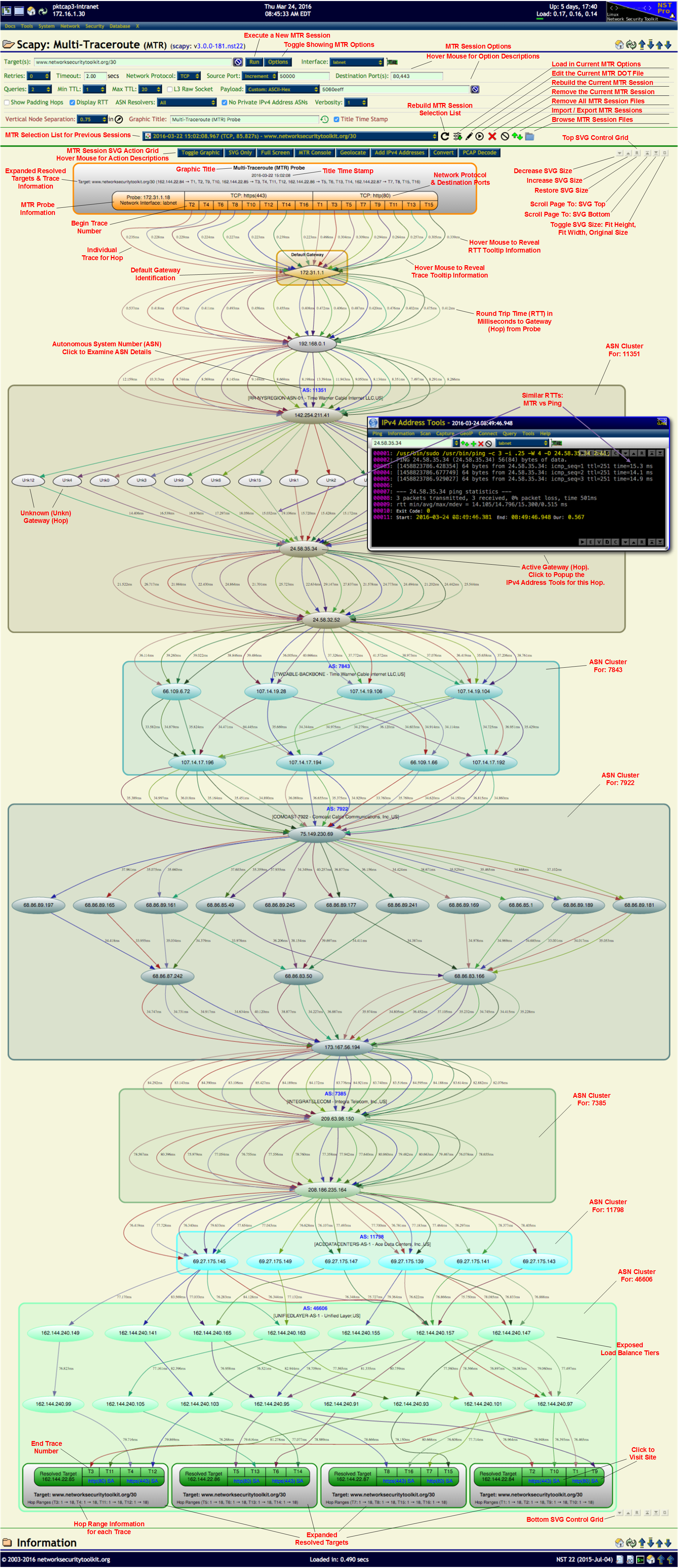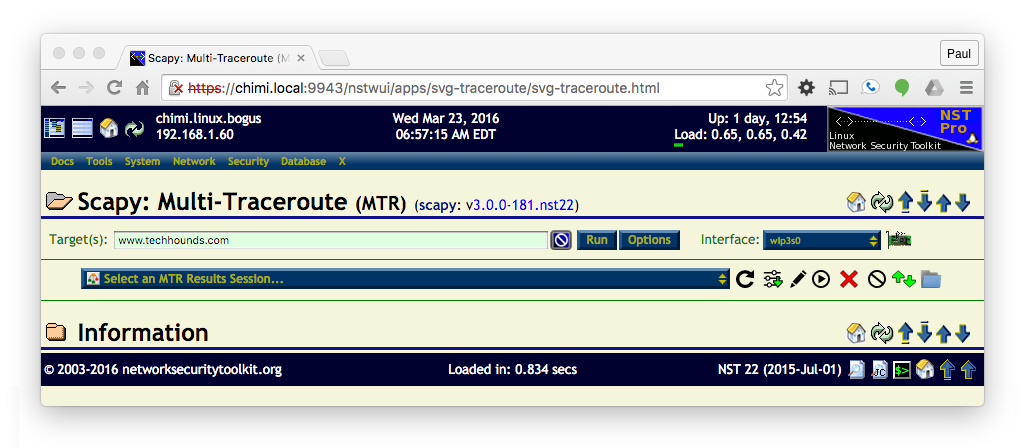HowTo Use The Scapy: Multi-Traceroute - MTR
Overview

SVN: 7683
A new Multi-Traceroute (MTR) networking tool has been developed for NST 22. This tool provides an interactive Traceroute visual using Scapy similar to the Traceroute Command and has been integrated into the NST WUI. NST uses the Python 3 version of Scapy known as Scapy3k.
A new Scapy3k command: mtr (Multi-Traceroute) has been developed. It is an enhanced version of the original Scapy traceroute command. It includes new features such as running multiple queries with each target, display of Round Trip Time (RTT) calculations, selection of using Network Protocols: TCP, UDP and ICMP and enhanced SVG graphical results.
Some NST WUI key enhancements include a GUI options interface, an interactive MTR SVG graphic, NST IPv4 Address Tools integration, IPv4 Address Geolocation, MTR session Packet Capture, ASN lookup, MTR historical session selection and management, MTR SVG graphic editing, MTR session console output access and SVG Graphic image conversion.
The following sections include the results of running an out of the box simple MTR trace and also the results from a more complex session. Please refer to the MTR Reference Document for additional information on using MTR.
Simple Trace
Using the Scapy Multi-Traceroute page can be as simple as entering the host name you want to perform the trace on (www.techhounds.com in the example below) and pressing the Run button.
Once the trace completes you will get a graphical chart (as an SVG image shown below) that contains:
- The list of IPv4 Addresses exposed by the trace (clicking on an IPv4 Address will bring up the IPv4 Address Tools widget).
- Round Trip Time measurements (RTT) from the Source (Probe) to each Segment (Gateway or Hop) of the trace.
- Autonomous System Number (ASN) clusters (when possible) for each segment of the trace.
Click to open the Simple MTR Session as an SVG Graphic only: Simple SVG Session Only. Tooltips will be available.
Note: To scale the MTR Session SVG graphic below without losing resolution use your browser's zoom controls (i.e., Windows / Linux: Ctrl+, Ctrl- Ctrl0, Mac OS X: Cmd+, CMD- or Cmd0)
<img src="http://wiki.networksecuritytoolkit.org/nstwiki/images/Scapy-mtr-simple.svg" style="width: 800px" alt="A simple Scapy Multi-Traceroute Example" />
Complex Trace
Two (2) Targets were used to produce this MTR Session SVG graphic: www.google.com and www.cnn.com.
Click to open the Complex MTR Session as an SVG Graphic only: Complex SVG Session Only. Tooltips will be available.
Note: To scale the MTR Session SVG graphic below without losing resolution use your browser's zoom controls (i.e., Windows / Linux: Ctrl+, Ctrl- Ctrl0, Mac OS X: Cmd+, CMD- or Cmd0)
<img src="http://wiki.networksecuritytoolkit.org/nstwiki/images/Mtr_overview.svg" style="width: 1200px" alt="MTR Overview SVG Graphic" />
Scapy: Multi-Traceroute (MTR) Reference Document
Use the document below to serve as a reference when using the Scapy Multi-Traceroute (MTR) NST WUI page. The Information section on the NST WUI page also provides access to Scapy and MTR supporting documents.

